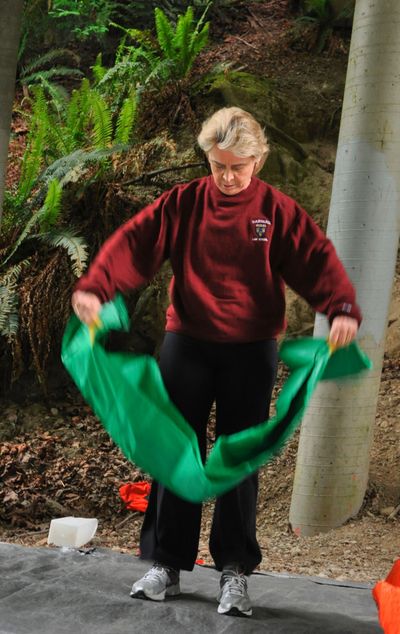Quiet wildfire season expected in NW

OLYMPIA – The La Niña weather pattern might be responsible for everything from flooding along the Mississippi to violent tornadoes in the South and Midwest. One thing it will be preventing or delaying is fire season in Washington.
With spring rainfall and mountain snowpacks both well above normal, state and federal fire officials are expecting a quiet June extending into July, and possibly longer.
So when Gov. Chris Gregoire, Washington State Patrol Chief John Batiste and some other state officials did their annual fire training Tuesday morning, it was with the expectation they wouldn’t be using those skills any time soon.
“The snowpack hasn’t melted yet, and it’s a wet spring,” Gregoire said after proving she could open, unfurl and get properly inside a fire shelter in the required 25 seconds.
Not that Gregoire is likely to get so far forward at a wildfire that she would need to huddle in a special life-saving tent while the fire swept over her. But the training is required for anyone who shows up at the command center of a major forest or wildfire, which she and Batiste do in years when the fires rage.
“Right now, we’re expecting no real fire danger through the end of July,” said Dan Johnson, chief deputy fire marshal.
In a typical year, fire season begins in mid- to late June, after early spring rains prompt grasses and other vegetation to grow in the lowlands, and several weeks of warm, dry weather turn them into tinder. Forest fires in mountain terrains are a problem in late summer through early fall, because of the combination of high temperatures and low humidity. But the vegetation that helps fuel those fires doesn’t grow until the snow melts.
The Natural Resources Conservation Service estimates snow in the mountains of Washington, Idaho, Montana and Oregon to be between 130 percent and 200 percent of average – a stark comparison to the same time a year ago when it was below 70 percent of average in many of those same areas.
And the snowpack is even more impressive considering the amount of water it’s holding, a factor called the snow water equivalent. The Selkirks near Spokane and the Cascades of the Upper Columbia are at 245 percent of normal, the Idaho Panhandle is at 235 percent of normal, and all mountain regions of the two states are well above normal.
The National Interagency Fire Center based in Boise is calling for “little or no risk for large fires” anywhere in the Northwest for the next seven days, and its Predictive Services call for below normal fire potential through August.